It’s Different in the Desert: My Experience with the CWA as an Arizona Water Professional
By Catie Marchand, Applications Engineer
Restoring and maintaining U.S. waterways is the charge of the 1972 Clean Water Act (CWA), administered by the EPA. By regulating the discharge of pollutants to Waters of the United States (WOTUS) and providing a national framework for water quality standards, the CWA is the foundation of programs that monitor, study, treat, and remediate our most valuable resource—water. (Learn more, The Clean Water Act | How a Small Fire Sparked Big Changes).
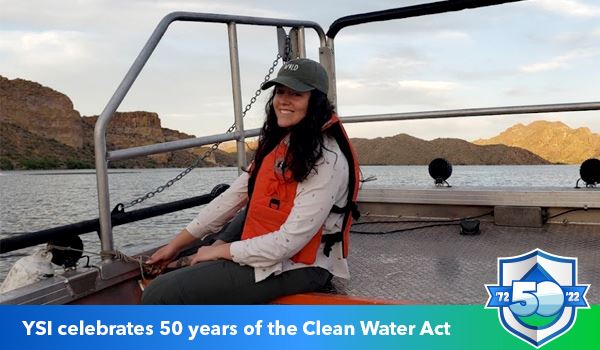
Here, I am conducting a state water quality and fish survey at Saguaro Lake, a reservoir along the Salt River.
As a water professional, the CWA provided the foundation for my career, much as it did for many others across the country. Following my college graduation and initial job in an environmental lab, I spent five formative years with the Arizona Department of Environmental Quality (ADEQ), a state agency whose mission is to protect and enhance Arizona's public health and the environment. I participated in this mission through my work in surface water quality monitoring, watershed improvement planning, and permit compliance enforcement.
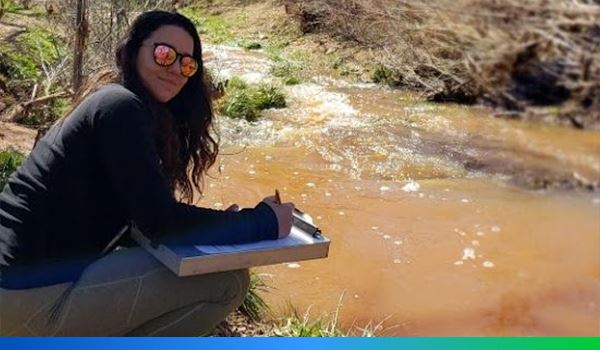
I spent several months sampling stormflow in the Verde River watershed in Northern Arizona to isolate areas contributing to high levels of E. coli and turbidity.
The CWA can look different in the Desert Southwest compared to the rest of the country. While Arizona is not home to oceans, high-volume rivers, or plentiful lakes, the people of the Southwest know how precious their water is.
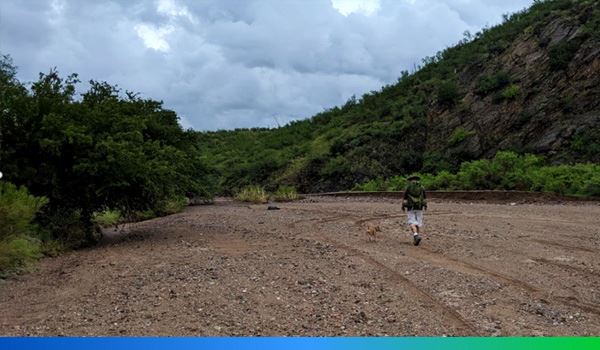
My colleague and I walk a dry streambed in Davidson Canyon just before a monsoon. Groundwater is the only viable drinking water source for many people in Southern AZ.
Because there is so little water, the pollution of desert watersheds can have a devastating impact. An innocuous discharge in a dry ditch may actually be a significant contributing source of pollution during a monsoon, when that dry streambed flows with water and carries pollutants downstream, often to one of Arizona’s many reservoirs that serve as public drinking water sources.
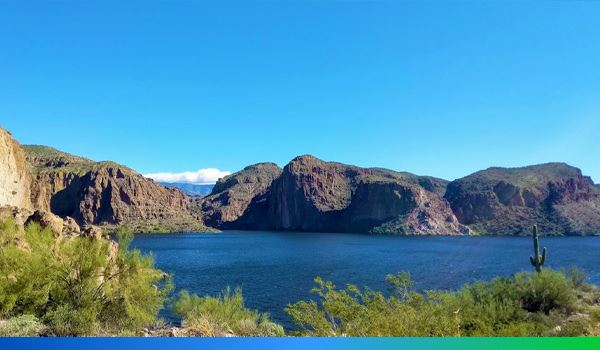
I snapped a quick photo after a long morning of water quality profiling at Roosevelt Lake, a Salt River Reservoir and one of the drinking water sources for the city of Phoenix.
The CWA helps to protect against point and nonpoint, or diffuse, source discharges in ephemeral streams—these are streams that only flow during storm events. This changed when the Trump Administration rolled back the reach of the CWA in 2020. With the amendment to the CWA, ephemeral streams, which make up 95% of Arizona’s waterbodies, are no longer protected.1
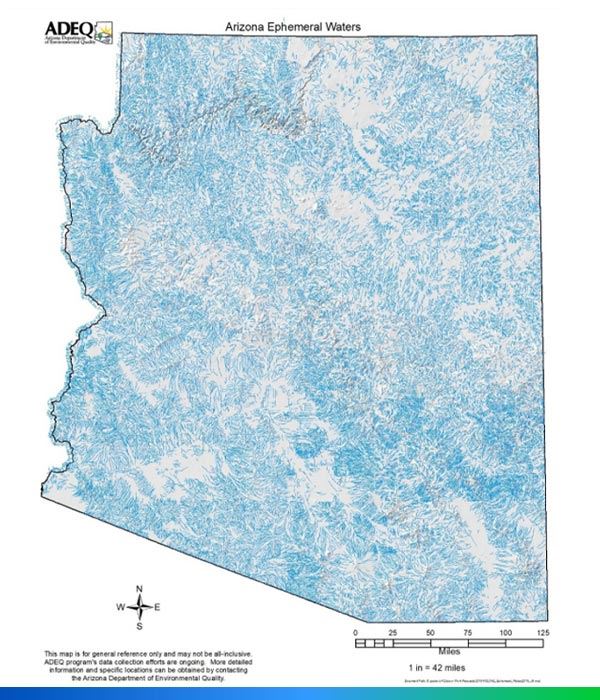
A map of Arizona’s ephemeral streams is highlighted in blue, which make up 95% of the state’s waterbodies (ADEQ).
An essential function of the CWA is to help states list polluted stream reaches, identifiable stream subunits, according to numerical water quality criteria (Section 303(d)/305(b)).2 States can then develop Total Maximum Daily Loads (TMDLs) to set a pollutant reduction target. Section 319 grant funds can be allocated to local landowners to help implement Best Management Practices (BMPs) for watershed improvement projects to improve water quality.3
A common example in Arizona would be awarding a grant to a rancher who owns property surrounding a stream that has been affected by high nutrient runoff and sedimentation. With a management plan, the grant award can help implement BMPs such as road culverts, diversions, stream engineering, bank stabilization, and fences to divert cattle to a cattle tank rather than trampling the streambed.
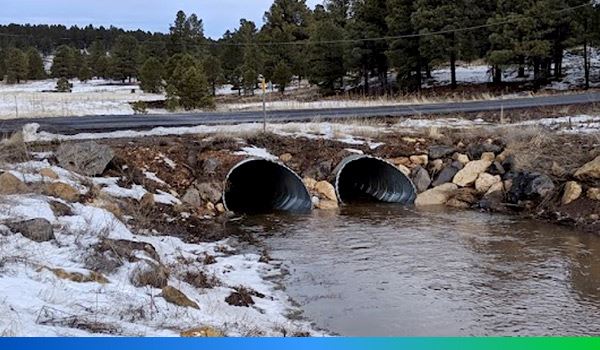
I sampled this stream reach affected by high E. coli and sedimentation near Flagstaff, AZ. The culvert allows water to flow under the road crossing, which prevents stream degradation by cars.
Managing Metals
Using my experience in hydrology and riparian systems, I participated in environmental monitoring and data collection on a watershed-wide scale. One of the premier concerns in Arizona watersheds is heavy metal contamination due to discharges from active and abandoned mines. ADEQ works closely with stakeholders, such as the Arizona Mining Association and private mining companies, to develop strategies to limit mining discharge from active mines and remediate discharges from the thousands of legacy mines that dot the state.
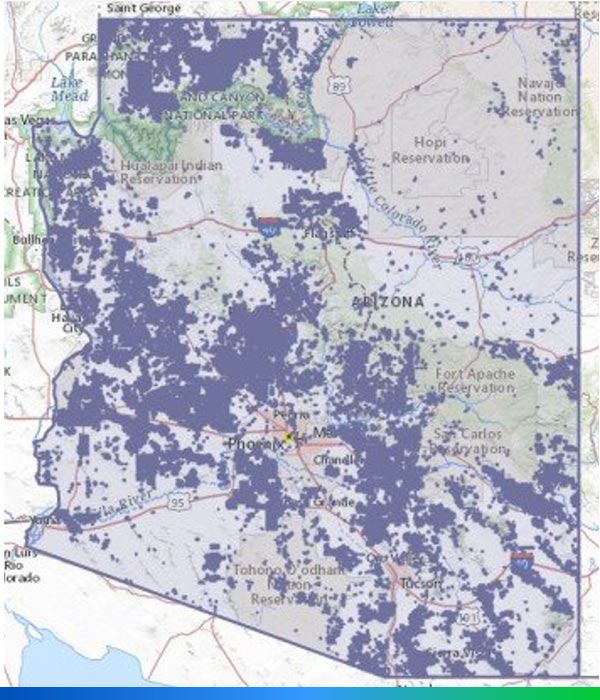
A map of active and abandoned mining claims in AZ. (TheDiggings.com)
Heavy metals such as lead, mercury, and arsenic have listed thresholds in the CWA and are heavily regulated. Efforts to limit inputs of these metals into waterbodies include sequestering storm runoff to the mine property, retention basins, natural filtration through wetlands, and treatments to enhance chelation and precipitation of metals for physical removal.
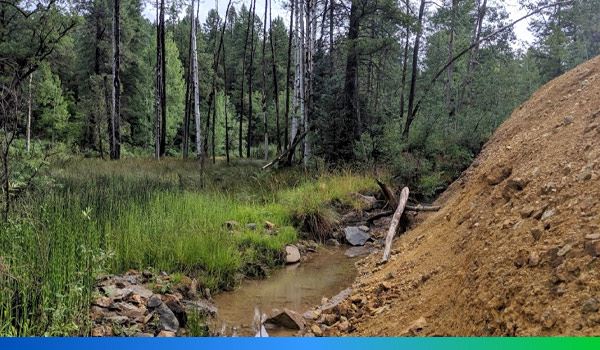
A large pile of mine tailings was dumped directly on the left bank of this perennial stream in the Bradshaw Mountains, AZ. It is a significant source of heavy metal pollution, affecting communities downstream.
While an overwhelming number of abandoned mines cause problems for landowners and regulators alike, the great news is that active mines and private companies largely support mine waste cleanup efforts and are proactive in compliance with CWA objectives.
Monitoring Microbes
Another watershed management concern in the desert Southwest is high E. coli concentrations. E. coli and other fecal coliform bacteria are a human health risk at high concentrations and have associated criteria in the CWA. While E. coli is naturally occurring in wildlife feces and bank sediment, elevated levels in water can be attributed to excessive grazing and cow activity, stormflow events, sewage leaks, areas of concentrated recreation, and even lazy dog owners.
ADEQ monitors for E. coli in surface waters and implements strategies for reducing concentrations to safe levels. In the Verde River Watershed, a popular sub-watershed is Oak Creek Canyon, home to Sedona's beautiful red rock city. Offering breathtaking natural views and exciting adventures, Sedona is also known for Oak Creek, recognized by the State as an Outstanding Arizona Water (OAW), a special designation for valued resources.
Being a popular tourist destination, Sedona and Oak Creek endure around 3 million visitors a year.5 Many of these visitors visit Slide Rock State Park, a point in Oak Creek where the bedrock forms a natural slide and a coating of algae creates a slippery surface. As people recreate the stream, sediment is kicked up, increasing turbidity and E. coli downstream. In addition, according to University of Arizona professor Dr. Chuck Gerba, humans can have on average 0.1 grams of feces on their person. Imagine how this would add up over 3 million visitors on a natural water slide…4
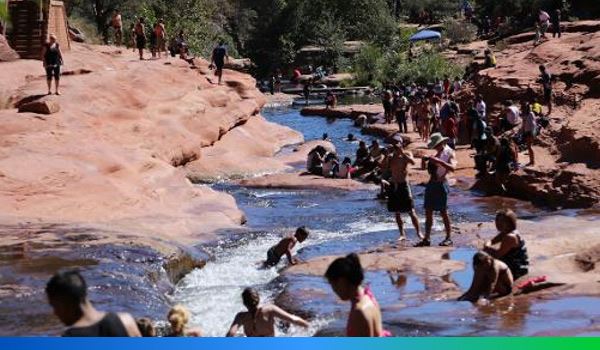
Visitors enjoying Slide Rock State Park, Sedona, AZ (AZ State Parks).
You can find serene hiking trails along the whole canyon of Oak Creek, the most popular being West Fork, upstream of Slide Rock. Dog owners frequent these trails, and while most are responsible in collecting dog waste, there is still a significant problem with waste being left behind and entering the watershed.
Working with local stakeholders, ADEQ has developed measures to remove excessive inputs of E. coli in the watershed. Some projects include installing more pet waste stations, re-wilding social trails worn in by people taking shortcuts to Oak Creek, and educating the public on environmental stewardship.7
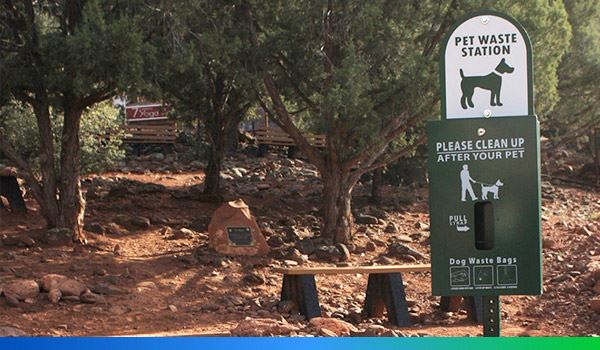
Pet waste station in Sedona, AZ (Oak Creek Watershed Council).
Downstream Implications
Implementation and regular maintenance of BMPs and long-term monitoring and sampling is crucial to improving water quality throughout the watershed. The downstream effects are significant because watersheds frequently contribute directly to drinking water sources. Namely, the Verde River Watershed runs into the Salt River, a main source of water for Phoenix residents via the Salt River Project (SRP).
The CWA is important legislation for the widespread protection of Arizona waterbodies. With the 2020 Amendment, federal protection of Arizona waters was decreased. ADEQ prioritized devising state-level protections for non-WOTUS waterbodies, i.e., non-jurisdictional reaches under the new CWA regulation under the Surface Water Protection Program.
Data from the state water quality monitoring program can be queried at the Arizona Water Quality Database.
From the Desert to the World Beyond
Current monitoring programs, utility providers, city planning, and residents are challenged by unprecedented drought conditions in the Southwest. The Arizona Department of Water Resources reports that more than 50% of the state is experiencing severe drought.6 While protecting clean water is important, ensuring the public and the environment’s access to sufficient water is equally so. Please visit the CDC's website for resources on drought in the Southwest.
The CWA continues to be a driving factor in water management decisions. But to ensure the future of our water resources, we need to demand more from federal protections. Dwindling water supplies, emerging contaminants, climate change, and unsustainable practices threaten global water security. Environmental legislation allows for the alignment of the major influencers, like industry, corporations, and utility providers, to reach a common goal for water conservation.
My experience as a water professional in Arizona ignited my passion for solving water quality problems in our communities. I carry the lessons learned from arduous field time in the blazing sun, and the wisdom imparted to me by my friends in public service. The perspectives of the Desert Southwest have shaped my understanding of the importance of sustainable water practices on a global scale and how private industry can be leaders of change for environmental good.

Sources
- U.S. EPA, Streams Under CWA Section 404
- U.S. EPA, Clean Water Act Section 303(d): Impaired Waters and Total Maximum Daily Loads (TMDLs)
- U.S. EPA, 319 Grant Program for States and Territories
- Futurism, A World of Poop—Literally
- Sedona Chamber of Commerce, Our Community
- Arizona Department of Water Resources, Drought Status
- Arizona Department of Environmental Quality, Watershed Improvement and Protection in Oak Creek